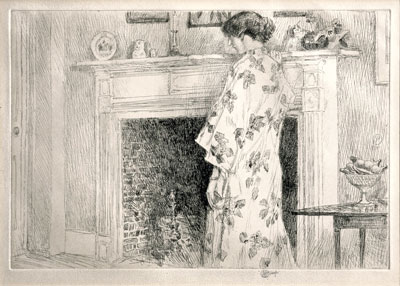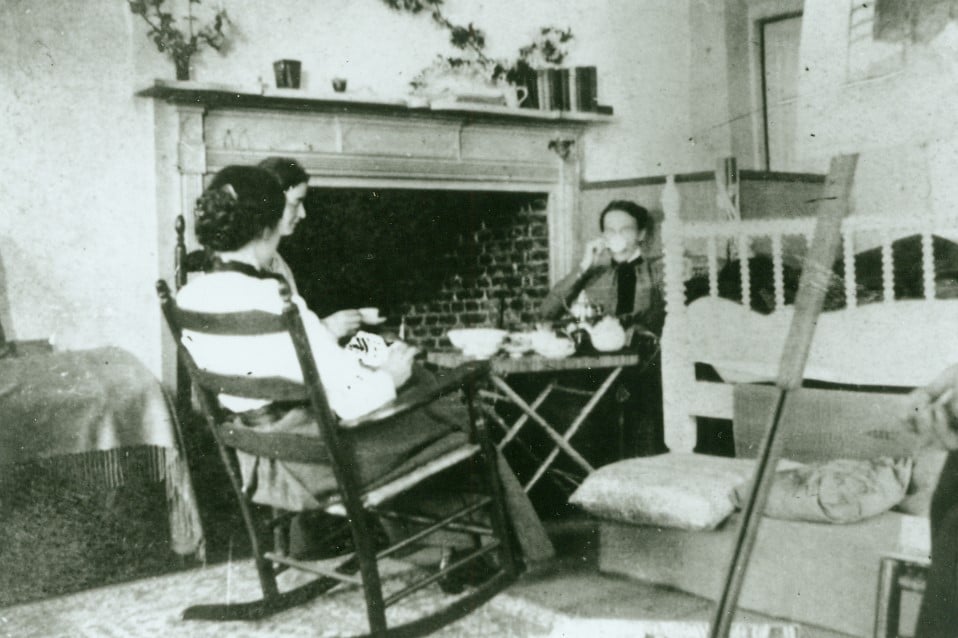Accommodations varied in the Holley House. The most comfortable room was located downstairs in the northeast corner of the house. Known as the best bedroom, this room was reserved for guests who could afford to pay for the extra space and comfort. Spacious, with an elegant Federal-era fireplace mantle and northeastern exposure from three large windows, this room had the nicest amenities. A 1902 letter from Emma Constant to her mother reveals that Childe Hassam, a notable Impressionist painter, paid $20 per week for the room and board. By contrast, another artist, Carolyn Mase, paid only $8 or $9 for her accommodations.
“The Holley House was a great, rambling, beautiful old accident.”
Lincoln Steffens
Childe Hassam frequently used the Federal mantelpiece in his etchings and paintings, such as in “The Mantelpiece.” Wallace Nutting, a well known photographer of the colonial revival, also used the federal mantelpiece in the Best Bedroom to stage photographs that idealized colonial America. Nostalgia for the colonial past reflected conflicting feelings about changes in American with regard to industrialization and immigration.




